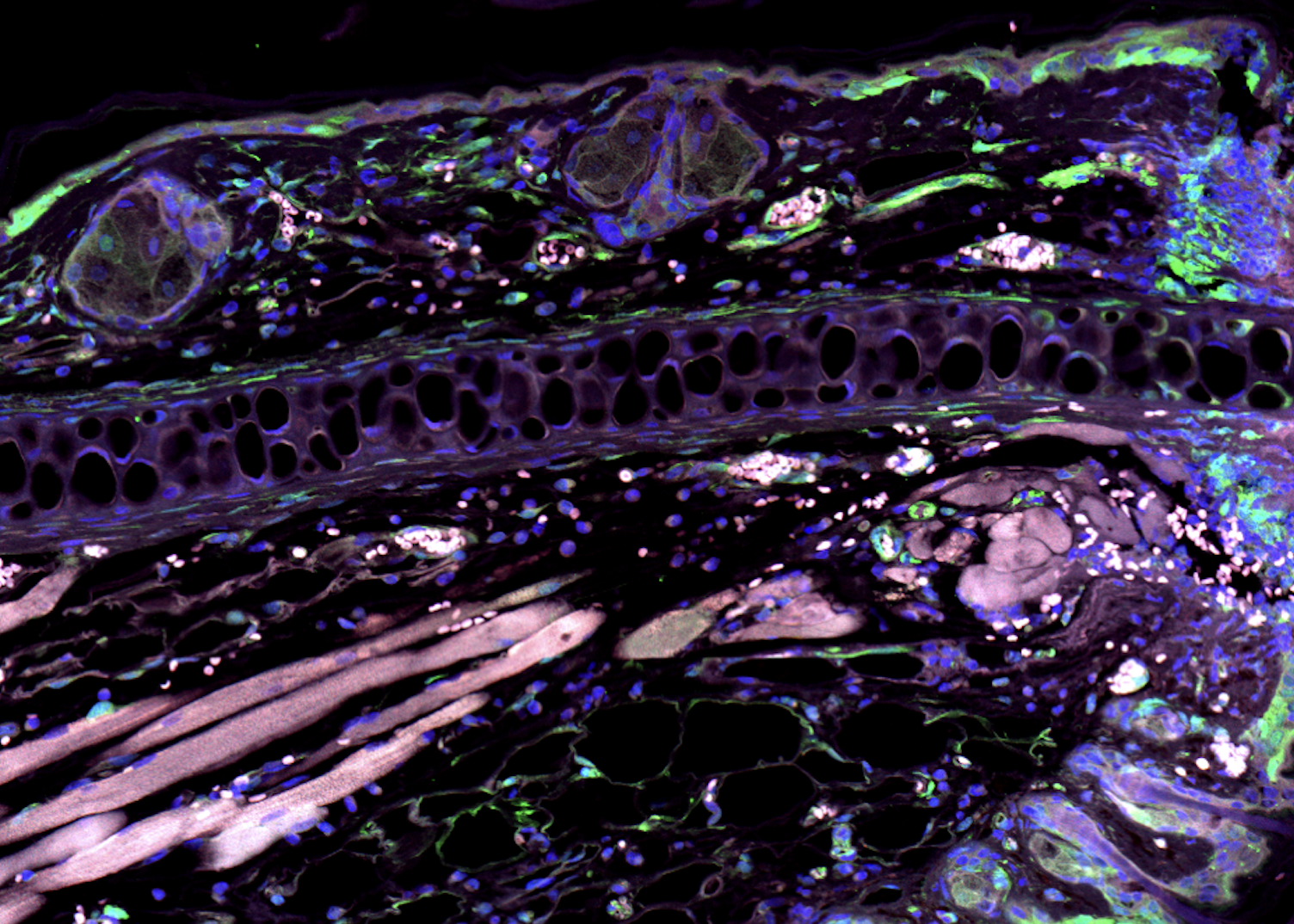Main content
Top content

A tissue section from the ear of a spiny mouse (© A. Tomasso/ K. Bartscherer)
21.09.2023
Scar-free wound healing: New study on the molecular genetic basis of tissue regeneration
How do spiny mice restore injured tissue and close wounds without leaving a scar? This question has been on the agenda of researchers ever since the rodents' special ability was first described about ten years ago. In a recent study, a team led by Osnabrück animal physiologist Prof. Dr. Kerstin Bartscherer took a closer look at the molecular basis of regeneration in the animals.
The researchers conducted several experiments at the Hubrecht Institute in Utrecht. They followed the healing of ear punches from spiny mice and analysed which genes were expressed at which time and in which regions of the ear.
Asymmetric wound healing
The results confirmed findings from previous studies suggesting that regeneration is not symmetrical: The process began on the part of the wound that was closer to the animals' heads. How can this be explained? The researchers assume that the contact of the tissue with blood and lymph vessels or nerve cells is crucial for regeneration – and these run from the base of the ear towards its periphery. In fact, disconnecting the punch wound from blood and nerve supply inhibited regeneration of the punched-out tissue.
A special role for the immune response?
In addition, gene expression analysis and comparison with non-regenerating rodents showed that in spiny mice, certain genes that are usually active in cells of the immune system are expressed to a considerable extent during tissue restoration. This suggests that immune cells migrating via blood or lymph vessels play a crucial role in regeneration.
A web-based tool for other researchers
The data obtained by Kerstin Bartscherer's team has been made available in a web-based tool so that other researchers can use it to further decipher tissue regeneration in spiny mice. After all, a precise understanding of scar-free wound healing in a mammal is not only fascinating – it could also prove very valuable for medical research.
Publication: van Beijnum, H.; Koopmans, T.; Tomasso, A.; Disela, V.; te Lindert, S.; Bakkers, J.; Alemany, A.; Berezikov, E. & Bartscherer, K. (2023): Spatial transcriptomics reveal asymmetric cellular responses to injury in the regenerating spiny mouse (Acomys) ear. Genome Research.
A detailed article on an earlier study by Kerstin Barscherer on regeneration in spiny mice can be found here: Wound healing without scarring: A molecular switch activates tissue regeneration.







